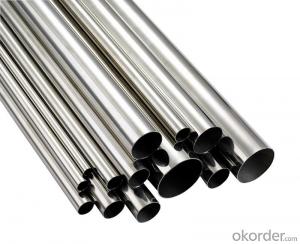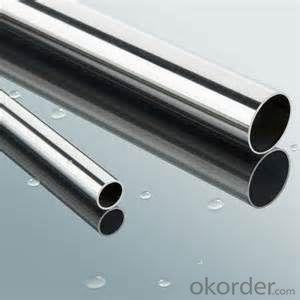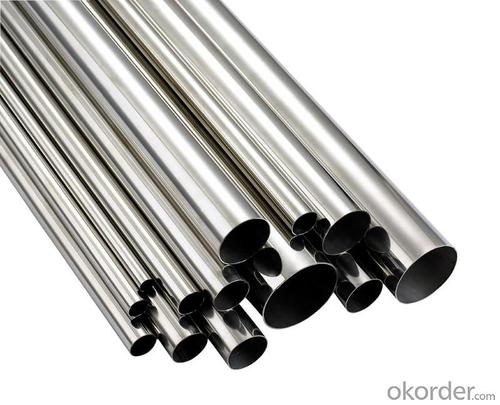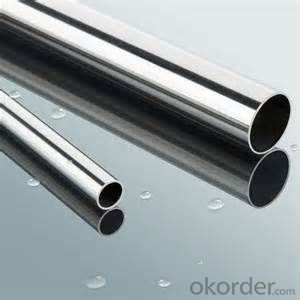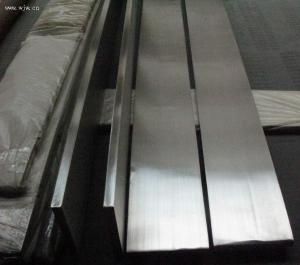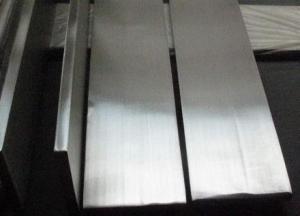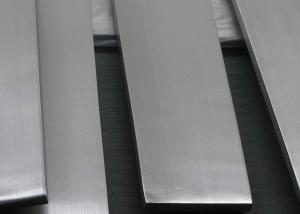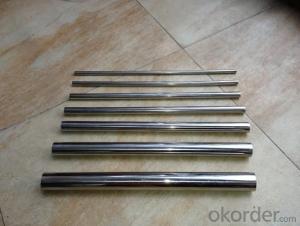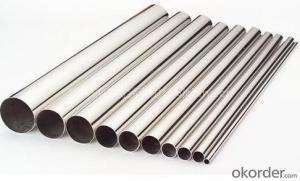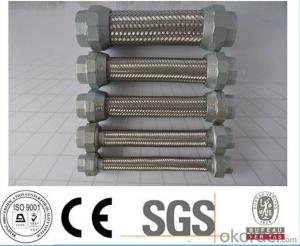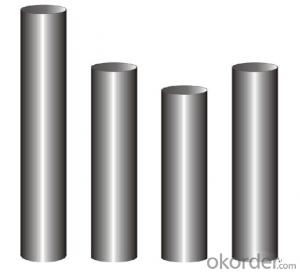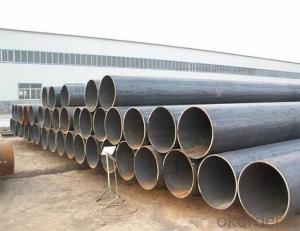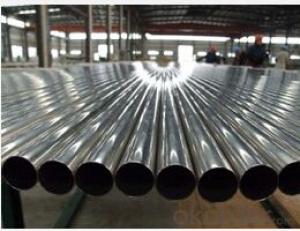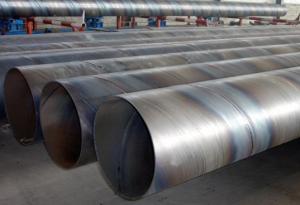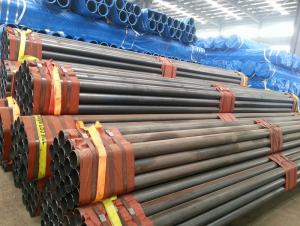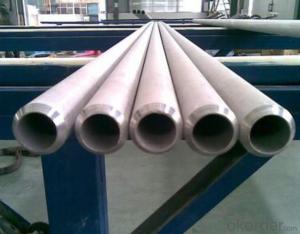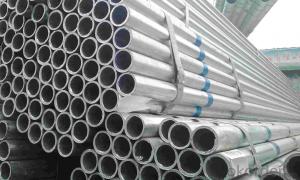STAINLESS STEEL FLOWER PIPES WITH WAVES
- Loading Port:
- China Main Port
- Payment Terms:
- TT OR LC
- Min Order Qty:
- -
- Supply Capability:
- -
OKorder Service Pledge
OKorder Financial Service
You Might Also Like
Description:
Stainless Steel Pipe
Material:
304 321 316 310
Packing:
In bundle
MOQ:
5 TONS
Comparison of standardized steels
| EN-standard Steel no. k.h.s DIN | EN-standard Steel name | SAE grade | UNS |
|---|---|---|---|
| 1.4109 | X65CrMo14 | 440A | S44002 |
| 1.4112 | X90CrMoV18 | 440B | S44003 |
| 1.4125 | X105CrMo17 | 440C | S44004 |
| | | 440F | S44020 |
| 1.4016 | X6Cr17 | 430 | S43000 |
| 1.4408 | G-X 6 CrNiMo 18-10 | 316 | |
| 1.4512 | X6CrTi12 | 409 | S40900 |
| | | 410 | S41000 |
| 1.4310 | X10CrNi18-8 | 301 | S30100 |
| 1.4318 | X2CrNiN18-7 | 301LN | |
| 1.4307 | X2CrNi18-9 | 304L | S30403 |
| 1.4306 | X2CrNi19-11 | 304L | S30403 |
| 1.4311 | X2CrNiN18-10 | 304LN | S30453 |
| 1.4301 | X5CrNi18-10 | 304 | S30400 |
| 1.4948 | X6CrNi18-11 | 304H | S30409 |
| 1.4303 | X5CrNi18-12 | 305 | S30500 |
| | X5CrNi30-9 | 312 | |
| 1.4541 | X6CrNiTi18-10 | 321 | S32100 |
| 1.4878 | X12CrNiTi18-9 | 321H | S32109 |
| 1.4404 | X2CrNiMo17-12-2 | 316L | S31603 |
| 1.4401 | X5CrNiMo17-12-2 | 316 | S31600 |
| 1.4406 | X2CrNiMoN17-12-2 | 316LN | S31653 |
| 1.4432 | X2CrNiMo17-12-3 | 316L | S31603 |
| 1.4435 | X2CrNiMo18-14-3 | 316L | S31603 |
| 1.4436 | X3CrNiMo17-13-3 | 316 | S31600 |
| 1.4571 | X6CrNiMoTi17-12-2 | 316Ti | S31635 |
| 1.4429 | X2CrNiMoN17-13-3 | 316LN | S31653 |
| 1.4438 | X2CrNiMo18-15-4 | 317L | S31703 |
| 1.4362 | X2CrNi23-4 | 2304 | S32304 |
| 1.4462 | X2CrNiMoN22-5-3 | 2205 | S31803/S32205 |
| 1.4539 | X1NiCrMoCu25-20-5 | 904L | N08904 |
| 1.4529 | X1NiCrMoCuN25-20-7 | | N08926 |
| 1.4547 | X1CrNiMoCuN20-18-7 | 254SMO | S31254 |
Stainless steel’s resistance to corrosion and staining, low maintenance and familiar lustre make it an ideal material for many applications. There are over 150 grades of stainless steel, of which fifteen are most commonly used. The alloy is milled into coils, sheets, plates, bars, wire, and tubing to be used in cookware, cutlery, household hardware, surgical instruments, major appliances, industrial equipment (for example, in sugar refineries) and as an automotive and aerospace structural alloy and construction material in large buildings. Storage tanks and tankers used to transport orange juice and other food are often made of stainless steel, because of its corrosion resistance. This also influences its use in commercial kitchens and food processing plants, as it can be steam-cleaned and sterilized and does not need paint or other surface finishes.
Stainless steel is used for jewelry and watches with 316L being the type commonly used for such applications. It can be re-finished by any jeweler and will not oxidize or turn black.
Some firearms incorporate stainless steel components as an alternative to blued or parkerized steel. Some handgun models, such as the Smith & Wesson Model 60 and the Colt M1911 pistol, can be made entirely from stainless steel. This gives a high-luster finish similar in appearance to nickel plating. Unlike plating, the finish is not subject to flaking, peeling, wear-off from rubbing (as when repeatedly removed from a holster), or rust when scratched.
- Q: Can stainless steel pipes be insulated with polyethylene-co-methacrylate?
- No, stainless steel pipes cannot be insulated with polyethylene-co-methacrylate.
- Q: Can stainless steel pipes be used for structural purposes?
- Yes, stainless steel pipes can be used for structural purposes. Stainless steel is known for its strength, durability, and resistance to corrosion, making it an excellent material for structural applications. Stainless steel pipes are commonly used in various industries such as construction, architecture, and engineering for structural support, as well as for conveying fluids and gases. They can withstand heavy loads, extreme temperatures, and harsh environmental conditions, making them suitable for a wide range of structural applications. Additionally, stainless steel pipes are available in different grades, sizes, and thicknesses, allowing for customization to meet specific structural requirements.
- Q: Can stainless steel pipes be used for solar power systems?
- Yes, stainless steel pipes can be used for solar power systems. Stainless steel is a commonly used material in solar power systems due to its durability, corrosion resistance, and high temperature tolerance. It is often used for the construction of solar water heaters, solar thermal collectors, and solar panel frames.
- Q: What is the tensile strength of stainless steel pipes?
- The tensile strength of stainless steel pipes can vary depending on the specific grade and manufacturing process, but it typically ranges from 515 to 827 megapascals (MPa) or 74,800 to 119,900 pounds per square inch (psi).
- Q: What is the difference between martensitic and precipitation-hardening stainless steel pipes?
- Martensitic and precipitation-hardening stainless steel pipes are two different types of stainless steel alloys that offer distinct characteristics and properties. Martensitic stainless steel pipes are known for their high strength and hardness. They are formed by quenching and tempering, a process that involves rapid cooling followed by reheating to achieve the desired properties. This type of stainless steel is magnetic and can be heat-treated to further enhance its strength. Martensitic stainless steel pipes are commonly used in applications where high mechanical strength, such as in automotive parts or cutlery, is required. On the other hand, precipitation-hardening stainless steel pipes are alloyed with elements like copper, aluminum, or titanium. The addition of these elements allows for the formation of precipitates during heat treatment, resulting in increased strength and corrosion resistance. Precipitation-hardening stainless steel pipes also offer good weldability and can be easily machined. They are typically used in industries such as aerospace, oil and gas, and chemical processing, where a combination of strength and corrosion resistance is crucial. In summary, the main difference between martensitic and precipitation-hardening stainless steel pipes lies in their composition and the heat treatment processes involved. Martensitic stainless steel pipes are hardened through quenching and tempering, offering high strength and hardness, while precipitation-hardening stainless steel pipes are strengthened through the formation of precipitates during heat treatment, providing a balance of strength and corrosion resistance.
- Q: Can stainless steel pipes be used for architectural applications?
- Yes, stainless steel pipes can be used for architectural applications. Stainless steel is known for its durability, corrosion resistance, and aesthetic appeal, making it an excellent choice for various architectural projects such as railings, handrails, facades, and decorative elements. Its versatility, strength, and ability to withstand harsh weather conditions make it an ideal material for architectural applications.
- Q: Can stainless steel pipes be used for irrigation sprinkler systems?
- Yes, stainless steel pipes can be used for irrigation sprinkler systems. Stainless steel pipes are known for their durability, strength, and resistance to corrosion, making them an excellent choice for irrigation systems. They can withstand high water pressure and are less likely to rust or deteriorate over time compared to other materials like PVC or galvanized steel. Additionally, stainless steel pipes are hygienic and do not contaminate the water supply, making them a safe option for irrigation systems. However, it is important to consider factors such as cost and compatibility with existing infrastructure before deciding to use stainless steel pipes for irrigation sprinkler systems.
- Q: What is the difference between 17-4 and 316 stainless steel pipes?
- The main difference between 17-4 and 316 stainless steel pipes lies in their composition and properties. 17-4 stainless steel, also known as SAE type 630, is a precipitation-hardening stainless steel that contains approximately 17% chromium and 4% nickel. It also contains small amounts of copper, niobium, and tantalum. The addition of these elements enables 17-4 stainless steel to undergo a heat treatment process, known as precipitation hardening, which increases its strength and hardness. This makes it suitable for applications that require high strength and good corrosion resistance, such as in aerospace and defense industries. However, it may not have the best resistance to certain corrosive environments compared to other stainless steels. On the other hand, 316 stainless steel is an austenitic stainless steel that contains approximately 16-18% chromium, 10-14% nickel, and 2-3% molybdenum. This composition provides excellent corrosion resistance, particularly in chloride-containing environments such as marine environments or coastal areas. 316 stainless steel is also known for its good weldability and formability, making it a popular choice in various industries including food processing, pharmaceuticals, and chemical processing. In summary, the primary difference between 17-4 and 316 stainless steel pipes lies in their composition and properties. 17-4 stainless steel offers higher strength and hardness through precipitation hardening, while 316 stainless steel provides superior corrosion resistance, especially in chloride-containing environments. The choice between the two will depend on the specific requirements of the application, with considerations for strength, corrosion resistance, and other factors.
- Q: Can stainless steel pipes be used for boiler tubes?
- Yes, stainless steel pipes can be used for boiler tubes. Stainless steel is a popular material choice for boiler tubes due to its excellent corrosion resistance, high temperature strength, and durability. These properties make stainless steel pipes suitable for handling high-pressure and high-temperature steam in boilers. Additionally, stainless steel is also known for its resistance to scaling and oxidation, which further enhances its suitability for boiler applications. Overall, stainless steel pipes are a reliable and effective choice for boiler tubes.
- Q: Can stainless steel pipes be used for solar energy systems?
- Yes, stainless steel pipes can be used for solar energy systems. Stainless steel is a versatile and durable material that can withstand the harsh conditions of solar energy systems. It is resistant to corrosion, which is crucial for the longevity of the pipes in outdoor and exposed environments. Stainless steel pipes also have excellent heat resistance properties, making them suitable for transporting hot fluids within solar energy systems. Additionally, stainless steel has a high strength-to-weight ratio, making it ideal for supporting the weight of solar panels or other components in the system. Overall, stainless steel pipes are a reliable and efficient choice for solar energy systems.
Send your message to us
STAINLESS STEEL FLOWER PIPES WITH WAVES
- Loading Port:
- China Main Port
- Payment Terms:
- TT OR LC
- Min Order Qty:
- -
- Supply Capability:
- -
OKorder Service Pledge
OKorder Financial Service
Similar products
Hot products
Hot Searches
Related keywords
